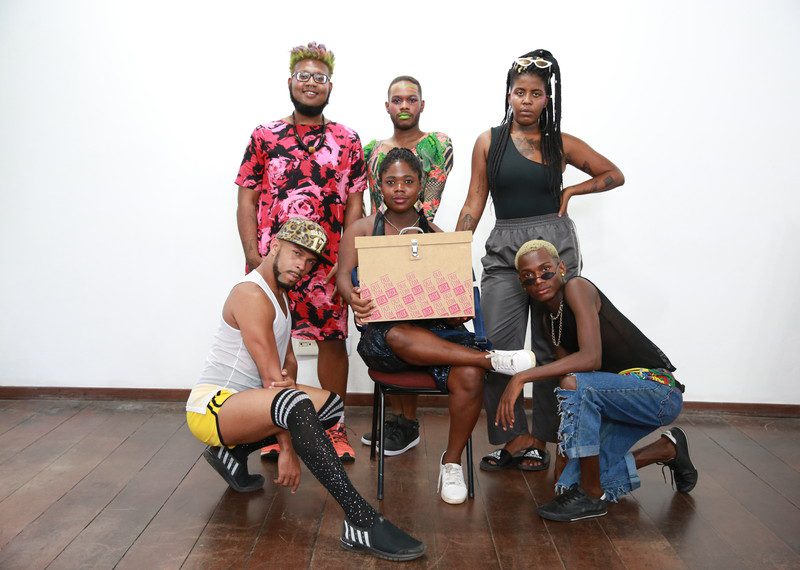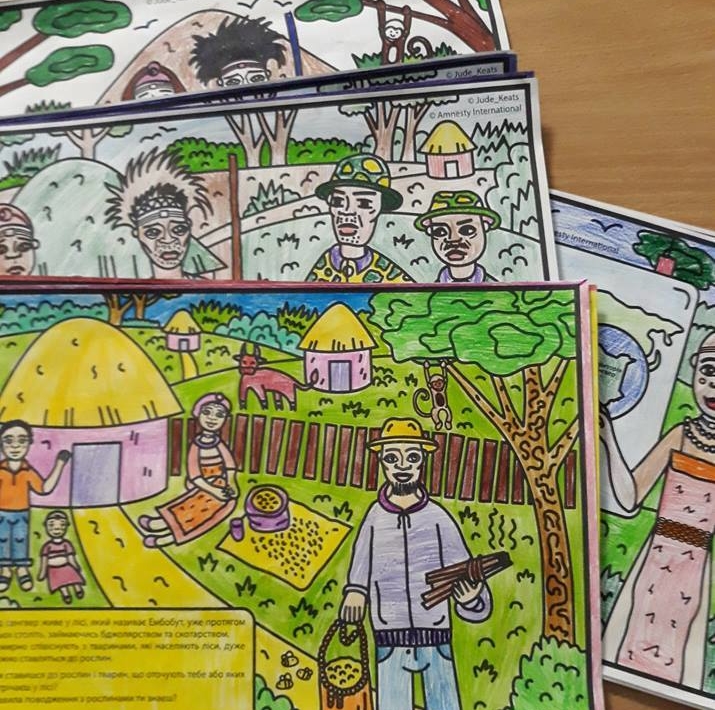During Write For Rights last year, thousands of students in Ukraine discovered human rights through illustrations
Every year, people all over the world get together to write letters for Amnesty International’s biggest initiative: Write For Rights. Thousands of people join in a writing marathon that aims to free prisoners of conscience, protect Human Rights Defenders and bring justice to victims of human rights violations. In 2018, over 7,000 students from Ukraine learned more about human rights, and particularly Human Rights Defenders, thanks to the illustrations designed by Olya Maksymenko in collaboration with Amnesty International.
Volodymyr Selivanenko, Human Rights Education Officer for Amnesty International Ukraine, says the goal was to “explain the essence of the marathon cases to the youngest students, using their empathy and sympathy for the heroes and heroines” reflected in the illustrated comics. He explains the representation of one of the cases: “For the Sengver people, we briefly described their lives, and how the Kenyan government threatens them. We depict the Sengver people not like victims, but as people who fight for their human rights”.
To create this connection between Human Rights Defenders and children, and to depict these stories in the best way possible for students so young, Amnesty International collaborated with Olya Maksymenko, a young Ukrainian illustrator and activist. “I started making comics for Amnesty International a year ago, it felt like the best way to explain long, complex stories to children” Maksymenko explains and adds “it gives me an opportunity to manifest my activism through art”.
It all started in the heart of Amnesty International Ukraine in 2017, where activists were looking for new ways to be creative in Write For Rights. Maksymenko volunteered her drawing skills and the comics were so well-received, they decided to do more in 2018 for children to learn about human rights. “We tried to choose the stories that were closer to the children, with young characters so they could identify with the heroes” explains Maksymenko. They also made two versions, one coloured and one only black and white, “so that the children could paint the card themselves and write messages” says Maksymenko. The possibility of colouring the comics made the children engage with the drawings, spending time looking at all the characters and learning more about their stories.

Mrs. Natalia Lytvyn and Mrs. Iryna Matvienko are teachers at General Education School #10 in Kryvyj Rih. They praise the comics because “sometimes it’s hard to get the children to talk openly, but the comics break the barrier of ‘seriousness’, they’re kind of a game”. In their classrooms, the comics motivated students to discuss human rights, “they talk about human rights, how people can be different but every person is worthy, everyone deserves attention and respect” they say. “We tried to put ourselves in the characters’ shoes, so students can see human rights is not an abstract concept”.
Mr. Mykhailo Skrypka, from General Education School #2 in Zhovkva, says the comics are “an excellent way to make stories about human rights interesting and informative” for the students. In the future, his students would love to see “puzzles and a board game based on the stories” to interact and learn more about human rights. “The stories have moved the children” he explains, “they learned about the hard and tragic situation of these Kenyan people, which helped them understand the human rights problem that affected them”.
The comics can teach children that “we must all be responsible for our actions, and each of us can stop injustice, because Human Rights Defenders are ordinary people” highlights Mrs. Valentina Filipjeva, from Mezhivskyi vocational-training college, and she adds: “Together we are powerful, unstoppable”.


